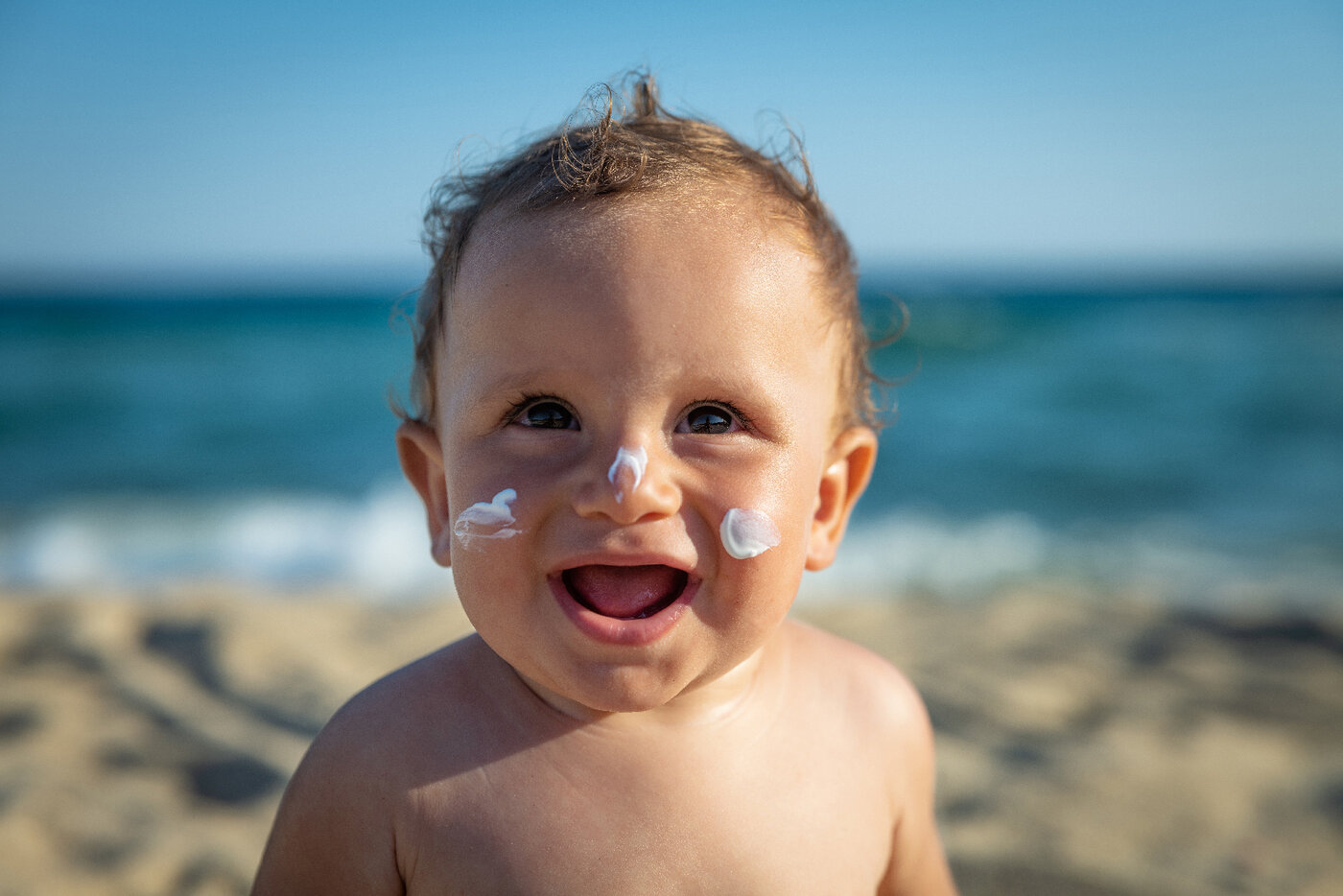Sun protection for children, what do I need to know?
01 January 2024The choice of sunscreen products for young children and babies is an important decision for parents, as their skin is still developing and more sensitive to the sun's UV rays.
UVA & UVB in brief:
UVA and UVB rays are two types of ultraviolet radiation that can affect the skin when exposed to the sun. They each have different effects on the skin:
-
UVB rays are responsible for the production of melanin, which is the pigment that gives the skin its tan colour. They are also responsible for sunburn and can cause skin burns, blisters and redness. They do not penetrate as deeply into the skin as UVA rays.
-
UVA rays penetrate deeper into the skin and are responsible for long-term sun damage, such as premature skin ageing, age spots and wrinkles. They can also aggravate existing skin problems, such as acne and eczema.
It is crucial to protect them to avoid sunburn and long-term UV damage to the skin. Here are some points to consider when choosing sun protection products for young children and babies:
◆ Protection factor (SPF): choose a product with a high protection factor, SPF 30 is a minimum (SPF 50 or higher if your child has fair skin). The higher the SPF, the better. Also make sure you choose a product that offers protection against UVA and UVB rays.
- SPF 15: blocks about 93% of UVB rays
- SPF 30: blocks about 97% of UVB rays
- SPF 50: blocks about 98% of UVB rays
- SPF 100: blocks about 99% of UVB rays
◆ Formula: choose a paraben-free, alcohol-free, non-comedogenic formula to avoid irritating your child's sensitive skin. Lotion or cream-based products are generally better tolerated by young children and babies.
◆ Labelling: make sure you read the labelling carefully to ensure the product is suitable for young children and babies. Some products are only intended for adults and may be too strong for children's sensitive skin.
◆ Reapplication: it is important to reapply the product regularly, especially after sweating or bathing. Follow the manufacturer's instructions for how long the product remains effective after application.
◆ Other protective measures: in addition to using sunscreen products, there are other steps you can take to protect your child's skin from the sun. For example, avoid exposing them to the sun during the hottest hours (11am to 3pm), use sun-protective clothing and a hat to cover their skin and face, and use blinds or curtains to block UV rays inside the house.
It is also important to remember that young children's and babies' skin is very sensitive so it is best to expose them to the sun gradually, with shorter periods of exposure at first and gradually increasing the duration of exposure.
MyNursery 2022



